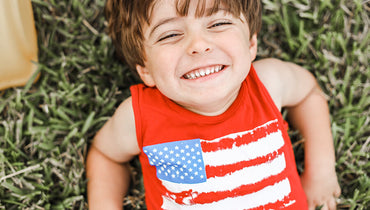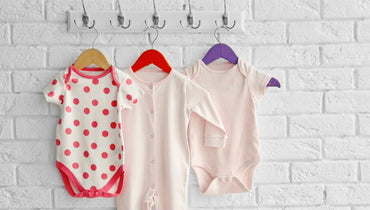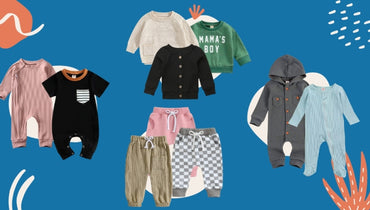Mini Cart
When your kid is still in the infant age, parents tend to show them different emotions and reactions they are supposed to have in response to diverse situations and events. Just remember how many times per day you grimace trying to show joy, anger, or sadness. These are the first steps of teaching kids about emotions.
When children grow up, they begin expressing their kids’ emotions in their own specific way. And this is where a lot of parents experience difficulties. First, handling tantrums of toddlers is a challenge, especially if parents need to deal with them a dozen times per day. Indeed, dealing with emotions for kids is a complicated task, however, before proceeding to how to actually deal with them, parents should determine for themselves how to react and behave to make sure that they are contributing to their children’s emotional intelligence, instead of hurting them.

What Parents Should Know About Kids’ Emotions
This matter is quite complicated because the way parents handle the emotions of their children influences not only their behavior but also their traits of character and future achievements. At what age can kids identify emotions? Of course, every kid is different, but usually, the first emotional outbursts happen after a kid reaches the age of 1. This is when parents should learn how to properly react to the feelings and emotions of their children. Before proceeding to recommendations, let us consider taboos:
- Never ignore the emotions of your child. Some may say that if parents do not pay attention to a child crying after the fall, kids will soon get used and cease crying because of that. In fact, they will stop showing their emotions to parents, the closest people in their lives. Do not be surprised when your teenager won’t talk to you and discuss serious problems they may face.
- Do not try to immediately distract your baby. Another approach of parents is looking for a favorite toy, bird, or anything else that can interest their crying baby to make them stop. This approach can be completely justified if you are in a place where you must behave silently. But this is hardly the case. By distracting, you make your child simply suppress their feelings.
- Do not reprimand your little one for misbehaving during an emotional outburst. Let us take an every-day example: your kid is trying to climb the table, and you have been asking him not to do that because of the danger. Eventually, your little adventurer manages to climb the table and falls from it. What will be the first reaction? Quite often, parents run to their kids and start repeating something like, “I have told you not to…,” “Why haven’t you listened to me?”, etc. You are definitely right, but be sure that in this emotional state, your baby does not even hear you.
Above, there are the top three mistakes committed by parents. Therefore, before looking for diverse emotional activities for kids, be sure that you have realized your mistakes, if any, and proceed to the main recommendations to reacting and explaining emotions for kids.
Recommendations to Parents on How to React to Emotions
More and more specialists are tracing the psychological consequences of parents’ behavior. Raising a child is a responsible task, therefore, showing children how to correctly handle their emotions is one more essential issue parents should take into consideration. Of course, we know how baby learns to be persistent, and they can master their emotions on their own. However, parents should be there for their kids at this important stage of their development. Here are the basic recommendations on helping children handle kids’ emotions, happy or sad they are.
The majority of psychologists would agree that a proper reaction of a parent to the outburst of anger of their kid should be:
- Pay your attention completely to your child and sit down to have an eye-to-eye contact: This is crucial because instructing a baby from the height of an adult won’t help you build friendly relations of trust with your kid.
- Try comforting your baby: If they cry, let them cry for a while, hug and kiss your little one. No matter which emotion your baby is trying to deal with. At this time, they are unable to perceive any information. They need nothing else but the support of the most important people in their lives.
- Become the mirror of your baby and tell which emotions they may feel at this moment. It is better not to state this directly. Rather use such phrases like “It seems...,” “It looks like you are sad/angry now.”
- Only after you have noticed that you have managed to attract the attention of your kid, begin explaining the reasons why this has happened and which feeling your kid may experience at a certain moment.
- It is a good practice to not only try to explain emotions definition for kids but to explain your own emotions to your baby. Let’s be honest, we are often angry or sad. Instead of avoiding contact with your child, try to explain what has happened to you, what you feel, and how you are going to cope with this feeling.
Teaching Kids About Emotions: Four Main Feelings
There are plenty of reactions to different situations. However, out of the list of feelings and emotions for kids, it is possible to mention four basic ones that can eventually transform into other manifestations. They are:
- Anger,
- Sadness,
- Fear,
- Jealousy.
Anger
Kids are easily provoked by even minor occurrences: they fall, someone takes their toys, they break something, etc. Anger is what they feel when something is going in the wrong way. This is the strongest emotion with the most prominent expression. That is why let your kid have a meltdown, even if this requires throwing something or yelling.
Sadness
When children are separated from parents for short periods, lose something, or miss someone who is far or passed away, they are sad. While comforting, parents may tell their own similar stories with a happy ending, therefore, convincing your little one that such unhappy situations are not forever.
Fear
Kids are usually afraid of darkness, being alone, negative characters from cartoons or fairy-tales, etc. It is necessary to seriously treat fears, otherwise, they may transform into phobias with psychological consequences.
Jealousy
It can be subdivided into the material (the wish to possess something that others have) and social (which is related to the feeling of being not in the right place or, on the contrary, ignored). In both cases, parents should not underestimate the feelings of their kids. Bring up your child focusing on other values, not material ones, to help them understand that it is not a big deal not to have that toy. In the case of social jealousy, this is mostly the problem experienced by teenagers. Never ignore what your kids tell you, otherwise, they will stop.
Final Words
Dealing with emotions is difficult for adults, what to say about children. That is why reading the list of emotions for kids, their definitions, and suggested behavioral patterns is not enough. Parents should be empathic, supportive, and always on their baby’s side.









